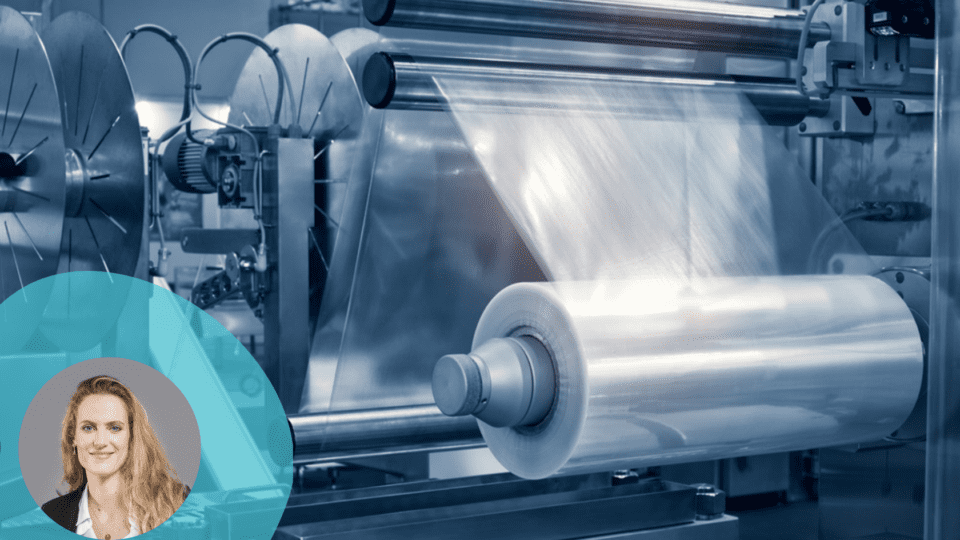Across the globe in 2024, 31.5% of overall plastic waste is expected to be mismanaged after disposal. This means it will either remain uncollected or improperly managed, ending up in landfill or causing toxic leakage. As the amount of mismanaged plastic waste continues to increase year on year, it is crucial to find ways to tackle this problem and strengthen our collective success rate in recycling.
Knowing that prevention is better than cure, the labelling industry has focused on a range of innovative solutions that seek to remove as many aspects of excess paper or plastic as possible. Early reports from Life Cycle Assessments (LCAs) and sustainability impact monitoring from across a range of industries are showing that adoption of linerless labels has the potential to dramatically reduce the amount of paper and plastic waste going into circulation in the global retail industry.
What are Linerless Labels?
Linerless labels are self-adhesive labels without the waste-creating liners (backing paper or plastic film), present in typical labels, that end up a significant source of waste. As these labels have a layer less than typical adhesives, they are a more sustainable solution for the labelling industry, in particular response to incredibly high demand sectors such as parcels and logistics services, convenience store pricing and food services systems.
For label manufacturers, linerless is an innovative solution to a range of longstanding challenges with labelling waste and manufacturing efficiency, but for the retailer or logistics provider it also represents a clear range of benefits.
Advertisement
1. Supply chain benefits.
In the first instance, linerless labels provide benefits down to the very beginning of a label’s lifecycle. By removing an entire component of the label (i.e. the paper or film liner), the volume of waste is immediately reduced by up to half, aiding in disposal costs. Linerless labels offer flexibility and simplicity in sizing, where multiple sizes can be transported and managed on one roll, reducing labor and replacements. Furthermore, in logistics, the reduced volume and multiple sizing can allow for more precise ordering and transport volume, leading to reduced shipping, overhead and storage costs.
Additionally, a notable positive example of the use of linerless labels comes from the fast food industry. Global chains have been reported to have incorporated this solution into their practices, providing them with an innovative alternative serving as a label, receipt and closure device all at once.
This undeniably improves and streamlines workflow. By employing linerless labels, these concerns are addressed altogether. Progressing along the supply chain, the new approach also presents a cost reduction in transportation logistics due to lighter weight combined with increased unit volume.
2. Sustainability benefits.
According to our own Life Cycle Assessment research, removing the liner from labels has been shown to result in an overall 35% reduction in carbon footprint and a 38% reduction in post-consumer waste. In addition, the use of fewer raw materials in the manufacture of these labels leads to lower emissions. Linerless labels have the potential to improve operational efficiency by enabling more units per roll, reducing the frequency of roll changes, which in turn enhances productivity. It is truly a case of a slight change having an enormous ripple effect that spreads out across the entire supply chain. Looking ahead, this innovative and sustainable alternative contributes to global positive changes for an even more sustainable future.
3. Consumer benefits.
We know that consumer expectations for businesses to operate more sustainably are rising in almost every geography and every industry – which we believe is a good thing. This pressure forces greater investment and innovation in more sustainable solutions, and we have always relished the challenge of finding the most cost-effective and sustainable way for clients to track products across any segment or supply chain. From a business perspective, employing tangible sustainability initiatives like linerless label solutions also provides short- and long-term benefits to brand perception among consumers, not to mention clients and stakeholders.
Today, the development of these labeling solutions has been well received globally, with North America the largest current consumer of linerless solutions, according to the report by Alexander Watson Association. Adoption there is growing at an annual rate of 11%, with Europe not far behind at 7.9%. The global CAGR of 11.3% cements it as a key area for the future of packaging solutions.
Linerless labels ensure that businesses need not worry about correct disposal of their liner waste – in fact, they remove any concerns about waste disposal beyond whatever the product packaging requires. In doing so, linerless labels also are contributing to the overall reduction of mismanaged waste.
Looking ahead, this innovative and sustainable alternative contributes to global positive changes for an even more sustainable future. Essentially, linerless labels have strong potential to become a widespread sustainable solution that can contribute to reducing waste, in turn aiding with waste mismanagement.
Barbara Dunin is Director of ESG, Marketing and Communications at Beontag, the global business enabler that serves as one of the world’s leading providers of IoT solutions and graphic and label materials.






